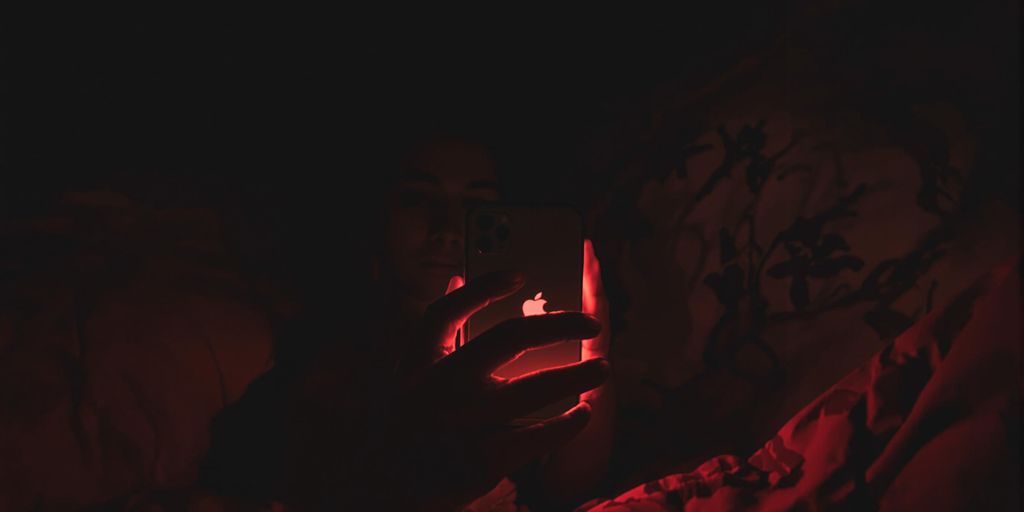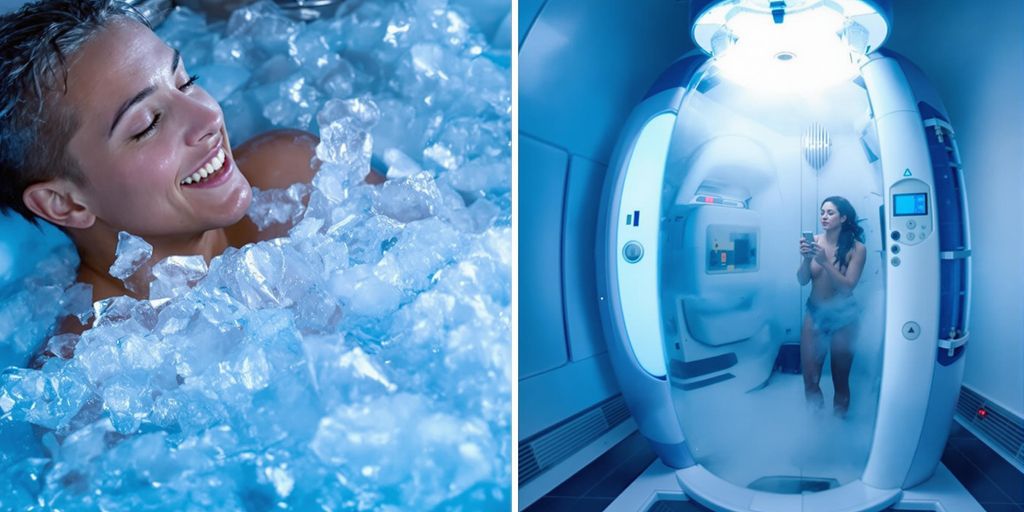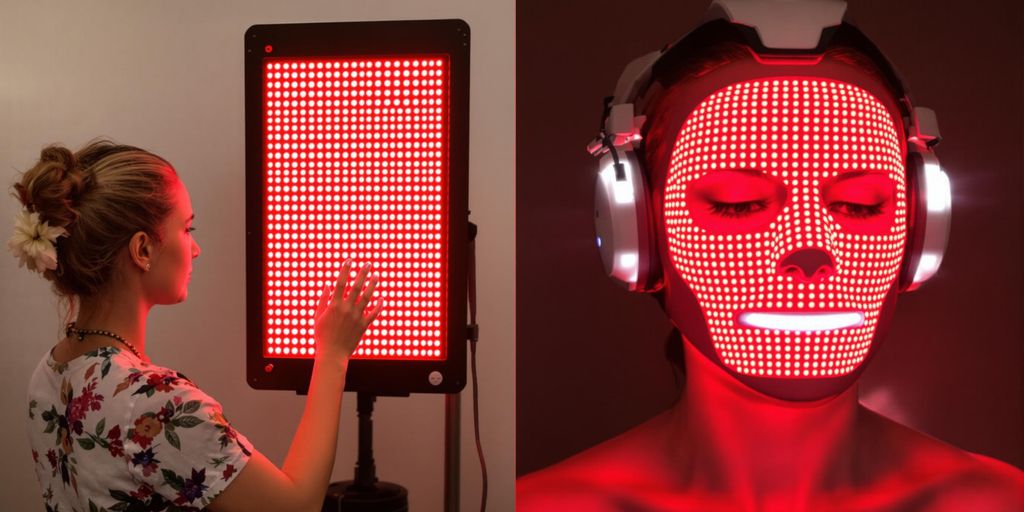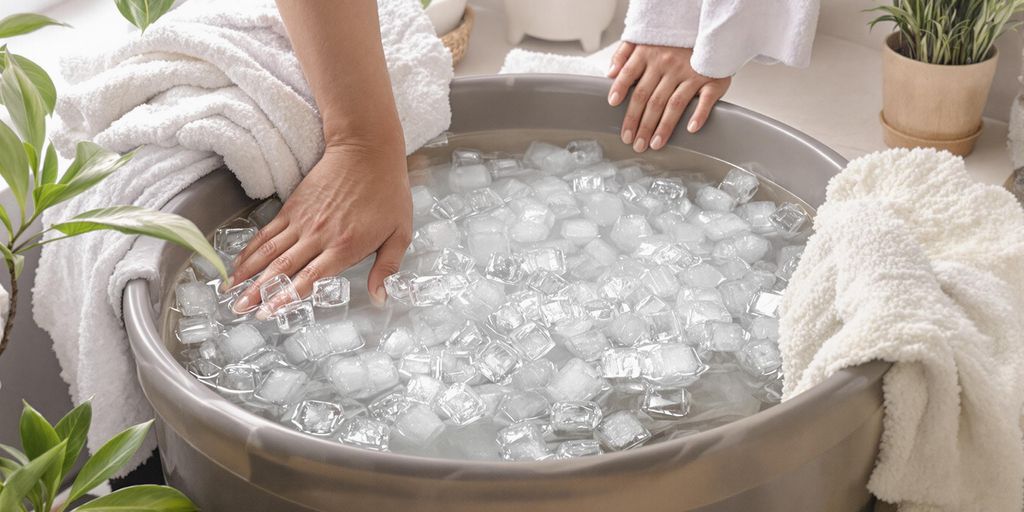Have you ever found yourself scrolling through your phone late at night, only to realize it’s messing with your sleep? Well, there’s a neat trick on your iPhone that can help. It’s called the iPhone’s Secret Red Light Mode, and it could be just what you need to keep your eyes comfortable and your sleep quality high. Let’s explore what this mode is all about and how you can easily set it up.
Key Takeaways
- Red Light Mode helps reduce eye strain at night.
- It can improve your sleep quality by not disrupting melatonin production.
- Activating this mode is simple and can be done through Accessibility settings.
- Red light is better for night vision compared to bright screens.
- Using Red Light Mode is great for reading or using your phone in dark environments.
Understanding iPhone’s Secret Red Light Mode
What Is Red Light Mode?
Okay, so you’ve probably heard whispers about this
The Science Behind Red Light and Sleep
How Red Light Affects Melatonin
So, you’re probably wondering how this whole red light thing actually works, right? Well, it’s all about melatonin. Melatonin is a hormone that your brain produces in response to darkness. It helps with the timing of your circadian rhythms (24-hour internal clock) and with sleep. Blue light, which is emitted by our phones, suppresses melatonin production, making it harder to fall asleep. Red light, on the other hand, has a different effect. Some research suggests that it doesn’t suppress melatonin as much as blue light does, and there’s even some evidence it might stimulate it. I know, crazy, right?
Research on Red Light Therapy
Okay, so it’s not just some random theory. There’s actual research behind this. I was reading about a study where female athletes used red light therapy for like, half an hour before bed for a couple of weeks. Guess what? They slept better, had higher melatonin levels, and even performed better in endurance exercises. Seriously! It’s pretty cool. There’s also some stuff about how red light might help preserve night vision and reduce that groggy feeling when you wake up. I mean, who doesn’t want less of that?
Impact on Sleep Quality
Basically, by switching to red light, you’re trying to minimize the disruption to your natural sleep cycle. Think about it: our ancestors didn’t have glowing screens before bed. They had campfires, which are mostly red and orange light. So, our bodies are kind of wired to respond better to those colors at night. By reducing blue light exposure and potentially boosting melatonin, you might find that you fall asleep faster, sleep more deeply, and wake up feeling more refreshed. It’s not a magic bullet, but it’s definitely worth a shot, especially if you’re struggling with sleep. Plus, it’s a super easy biohack to implement. You can even get blackout curtains to make your room even darker!
Activating Red Light Mode on Your iPhone
So, you’re ready to ditch the blue light and embrace the soothing red? Awesome! It’s easier than you might think to get your iPhone set up for optimal sleep. Let’s walk through the steps.
Step-by-Step Guide
Okay, here’s the breakdown. It might seem like a lot of steps, but trust me, once you do it, you’ll be a pro. You’ll be able to quickly enable red light therapy on your phone.
- Open Settings: Head to the Settings app on your iPhone. You know, the one with the gears.
- Go to Accessibility: Scroll down until you see “Accessibility” and tap it. This is where all the magic happens for customizing your phone’s display.
- Tap Display & Text Size: In the Accessibility menu, find “Display & Text Size” and select it.
- Choose Color Filters: Scroll down and tap on “Color Filters”.
- Enable Color Filters: Toggle the switch at the top to turn Color Filters on. You’ll probably see some weird color shifts at first, but don’t worry!
- Select Color Tint: Choose “Color Tint” from the options. Now you get to play with the colors.
- Adjust Intensity and Hue: Use the Intensity and Hue sliders to find the perfect red shade. Crank up the intensity for a deeper red. Adjust the hue to get the exact tone you want. Experiment until it looks good to you.
Using Accessibility Settings
The Accessibility settings are your friend here. They’re designed to help people with various needs, but they also offer some cool customization options for everyone. The Color Filters option is a bit hidden, but it’s super powerful. You can adjust not just the color, but also the intensity, making it perfect for different lighting conditions. Don’t be afraid to play around with the settings to find what works best for your eyes. You can always revert back to the default if you mess things up. It’s all about finding that sweet spot where the screen is easy on your eyes but still readable. This is a great way to reduce eye strain.
Creating a Quick Access Shortcut
Okay, so you’ve got the red light mode set up. But what if you want to quickly turn it on and off? Digging through the settings every time is a pain. Luckily, there’s a shortcut! You can set up the Accessibility Shortcut to toggle Color Filters with a triple-click of the side button (or the Home button on older iPhones). Here’s how:
- Go to Settings: Open the Settings app again.
- Go to Accessibility: Scroll down and tap on “Accessibility”.
- Find Accessibility Shortcut: Scroll all the way to the bottom and tap on “Accessibility Shortcut”.
- Select Color Filters: Check the box next to “Color Filters”.
Now, whenever you triple-click the side button (or Home button), it will toggle the Color Filters on and off. Super convenient for quickly switching to nighttime notifications!
Customizing Your Red Light Experience
Adjusting Intensity and Hue
Okay, so you’ve got the red light mode up and running on your iPhone. Now comes the fun part: tweaking it until it’s just right. Don’t settle for the default! The intensity slider is your best friend here. Play around with it. A deeper red might be better for some situations, while a lighter tint could work better for others. It really depends on your eyes and the ambient light.
And don’t forget about the hue! You can adjust the hue slider to find the perfect shade of red that feels most comfortable. It’s all about finding that sweet spot where it reduces eye strain without making everything look too weird. Experiment! You might be surprised at what you prefer. I know I was. I thought I wanted the deepest red possible, but it turned out a slightly lighter, warmer tone was much easier on my eyes.
Setting Up Color Filters
Color filters are the secret sauce to getting that perfect red light experience. You’ll find these settings buried in the Accessibility options. It might seem a little complicated at first, but trust me, it’s worth digging around.
Here’s the basic idea: you’re essentially telling your iPhone to overlay a red filter on everything. This is different from just dimming the screen, because it actually changes the color composition of the light. To get there, go to Settings > Accessibility > Display & Text Size > Color Filters. Turn Color Filters on, and then select “Color Tint”. From there, you can adjust both the intensity and the hue to your liking.
Using Third-Party Apps
While the built-in red light mode is pretty good, there are also a bunch of third-party apps that can give you even more control. Some of these apps let you fine-tune the color temperature, set up automatic schedules, or even create custom filters.
For example, you might find an app that lets you adjust the gamma, which can make the screen appear even dimmer and more comfortable in very dark environments. Or, you could use an app to automatically switch to red light mode at sunset and switch back in the morning. It’s all about finding the right tools to fit your needs. Just be sure to read the reviews and check the permissions before installing anything. You want to make sure you’re using a reputable app that won’t drain your battery or compromise your privacy. I’ve found a few that are real game-changers for my morning habits.
Why Choose Red Light Over Blue Light
Effects of Blue Light on Sleep
Okay, so you’re probably wondering why all this fuss about red light, right? Well, it all boils down to blue light. Blue light, which is emitted by our phone screens, tablets, and even some light bulbs, can really mess with your sleep. It suppresses melatonin production, which is the hormone that makes you sleepy. Think of it like this: your body thinks it’s still daytime when it’s exposed to blue light, even if it’s late at night. This makes it harder to fall asleep and can lead to restless nights. I know I’ve been there, staring at my phone at 11 PM and then tossing and turning for hours. Not fun.
Advantages of Red Light
Red light, on the other hand, is much gentler on your eyes and doesn’t have the same melatonin-suppressing effect as blue light. Switching to red light mode on your iPhone can help your body wind down naturally before bed. It’s like telling your brain, “Hey, it’s okay to relax now.” Plus, red light is less likely to disrupt your night vision, which can be handy if you need to get up in the middle of the night. I’ve found that using red light mode helps me fall asleep faster and wake up feeling more refreshed. It’s a small change, but it can make a big difference.
Reducing Eye Strain
Beyond sleep, red light can also help reduce eye strain, especially in low-light conditions. Staring at a bright screen in the dark can be really hard on your eyes, leading to headaches and blurred vision. Red light is much easier on the eyes, making it more comfortable to use your phone or tablet before bed. I’ve noticed a significant reduction in eye strain since I started using red light mode, especially when I’m reading in bed. It’s a simple way to take care of your eyes and improve your overall comfort. It’s like giving your eyes a little vacation after a long day of staring at screens.
Practical Uses for Red Light Mode
Reading in Low Light
Ever tried reading on your phone in bed and ended up with a headache? Yeah, me too. That’s where red light mode comes in clutch. It’s way easier on your eyes than the usual bright white or blue light. I’ve found that using it makes reading e-books or articles before bed much more comfortable. It’s like having a built-in, gentle reading light that doesn’t strain your eyes. Plus, it helps me wind down instead of getting that wired feeling from staring at a regular screen.
Nighttime Notifications
Okay, so we all know those late-night notifications are the worst, right? The sudden burst of blue light can be super disruptive, especially when you’re trying to sleep. I started using red light mode for my notifications, and it’s made a huge difference. The dimmer, red-tinted alerts are much less jarring. It’s like a subtle nudge instead of a full-on wake-up call. You can still see what’s going on without completely ruining your sleep patterns.
Camping and Stargazing
This one’s a bit niche, but trust me, it’s awesome. If you’re into camping or stargazing, red light mode is a game-changer. Regular white light messes with your night vision, making it harder to see in the dark. Red light, on the other hand, preserves your night vision, so you can actually see the stars or navigate around the campsite without blinding yourself. It’s a small thing, but it makes a big difference. I remember one camping trip where everyone else was fumbling around with bright flashlights, and I was just chilling with my red-tinted phone, seeing everything clearly. It’s like having a secret superpower. Plus, it’s way more considerate to your fellow campers. Nobody wants to be blinded by a bright screen in the middle of the night!
Common Misconceptions About Red Light Mode
Does It Affect App Performance?
One thing people worry about is whether using red light mode will slow down their iPhone. The good news is, it generally doesn’t. Red light mode is basically a color filter, and it doesn’t require a lot of processing power. You might see a tiny difference on older phones, but on newer models, you probably won’t notice anything at all. It’s not like running a demanding game or video editing software.
Is It Safe for All Users?
For most people, red light mode is perfectly safe. However, there are a couple of things to keep in mind. If you have any pre-existing eye conditions, it’s always a good idea to check with your eye doctor before making big changes to your screen settings. Also, some people might find that the red tint makes it harder to see certain colors or read small text. If that’s the case, you can always adjust the intensity or turn it off when needed.
Can It Replace Night Shift?
Night Shift and red light mode both aim to reduce blue light, but they work a bit differently. Night Shift automatically adjusts the color temperature of your screen based on the time of day, making it warmer. Red light mode, on the other hand, applies a red filter to the entire screen. So, can it replace Night Shift? It depends on what you’re looking for. Night Shift is more subtle and might be better for general use, while red light mode is more intense and could be better for really blocking out blue light before bed. Some people even use both together! It really comes down to personal preference. I’d say experiment and see what works best for you.
Tips for Better Sleep Hygiene
Limiting Screen Time Before Bed
Okay, so we’ve talked about red light and how it might help, but let’s be real: the best thing you can do is just put the phone down. I know, easier said than done, right? But seriously, try to cut off screen time at least an hour before you hit the hay. That means no scrolling through TikTok, no late-night emails, and definitely no doomscrolling the news. Find something else to do, like reading a real book (remember those?), meditating, or just chatting with your family. Your brain will thank you.
Creating a Sleep-Friendly Environment
Think of your bedroom as a sleep sanctuary. It should be dark, quiet, and cool. Blackout curtains are a game-changer – seriously, invest in some. Also, make sure your room is at a comfortable temperature; most people sleep best in a slightly cooler room, like around 65 degrees Fahrenheit. And declutter! A messy room can lead to a messy mind, which is not what you want when you’re trying to drift off. Consider these:
- Blackout Curtains: Block out all external light sources.
- Temperature Control: Keep the room cool, ideally between 60-67°F (15-19°C).
- Noise Reduction: Use earplugs or a white noise machine to minimize disturbances.
Incorporating Relaxation Techniques
Sometimes, even with the perfect environment, your mind just won’t shut off. That’s where relaxation techniques come in. Experiment with different things to see what works for you. Some ideas:
- Meditation: Even just 5-10 minutes of guided meditation can make a difference.
- Deep Breathing: Try the 4-7-8 technique: inhale for 4 seconds, hold for 7, exhale for 8.
- Gentle Stretching: A few simple stretches can release tension in your body.
- Reading: A physical book, not on a screen, can help you wind down.
Find what helps you relax and make it a part of your nightly routine. It’s all about training your brain to associate these activities with sleep.
Exploring Other Biohacks for Sleep
Okay, so you’re messing around with your iPhone’s red light mode, trying to get better sleep. That’s cool, but there’s a whole bunch of other stuff you can try too. Think of it like this: red light is just one tool in your sleep-hacking toolbox. Let’s look at some other options.
Using Sleep Masks and Earplugs
Seriously, don’t underestimate the power of a good sleep mask and some earplugs. They’re cheap, easy to use, and can make a huge difference in blocking out light and noise. I used to think they were only for travel, but now I use them every night. It’s amazing how much darker and quieter my room can be, even with blackout curtains. You can find a sleep mask that fits comfortably and doesn’t put pressure on your eyes. As for earplugs, experiment with different types (foam, silicone, wax) to find what works best for you.
Implementing a Sleep Schedule
Ugh, I know, schedules. But hear me out. Your body loves routine. Going to bed and waking up around the same time every day, even on weekends, can seriously improve your sleep quality. It helps regulate your body’s natural sleep-wake cycle, also known as your circadian rhythm. It might be tough at first, especially if you’re used to sleeping in on Saturdays and Sundays, but stick with it. After a while, your body will naturally start to feel tired around bedtime and wake up around the same time each morning. Consistency is key. If you are having trouble, try setting a consistent bedtime to help regulate your sleep cycle.
The Role of Diet and Exercise
What you eat and how much you move during the day can have a big impact on how well you sleep at night. Avoid heavy meals, caffeine, and alcohol close to bedtime. These can all interfere with your sleep. Instead, try to eat a balanced diet throughout the day and get regular exercise. But don’t exercise too close to bedtime, as that can also keep you awake. A light walk or some stretching in the evening can be helpful, but avoid intense workouts right before bed. Also, consider the impact of foods that enhance dopamine on your overall mood and sleep patterns. Experiment and see what works for you.
Final Thoughts on Red Light Mode
So there you have it! Enabling the red light mode on your iPhone is a quick and easy way to help improve your sleep and reduce eye strain. It’s a simple tweak that can make a big difference, especially if you’re someone who likes to check your phone at night. Give it a shot and see how it works for you. Your eyes and sleep might just thank you for it! And hey, if you have any tips or experiences to share, drop them in the comments. Happy sleeping!
Frequently Asked Questions
What is Red Light Mode on an iPhone?
Red Light Mode changes your screen to a red hue, which is easier on your eyes, especially at night.
How does red light help with sleep?
Red light can help your body produce melatonin, a hormone that makes you sleepy, improving your sleep quality.
What’s the difference between Red Light Mode and Night Shift?
Night Shift reduces blue light, while Red Light Mode turns your screen red, which is even less likely to disturb your sleep.
Can I still use my apps with Red Light Mode on?
Yes! Your apps will work normally; only the screen color changes.
Is using red light safe for everyone?
Yes, red light is generally safe for all users and can help reduce eye strain.
Can Red Light Mode replace Night Shift?
While they serve different purposes, you can use Red Light Mode instead of Night Shift for nighttime use.
When is it best to use Red Light Mode?
It’s great to use before bed, when reading in low light, or during nighttime activities.
How can I easily switch to Red Light Mode?
You can set up a shortcut in your iPhone’s settings to quickly toggle Red Light Mode on and off.




